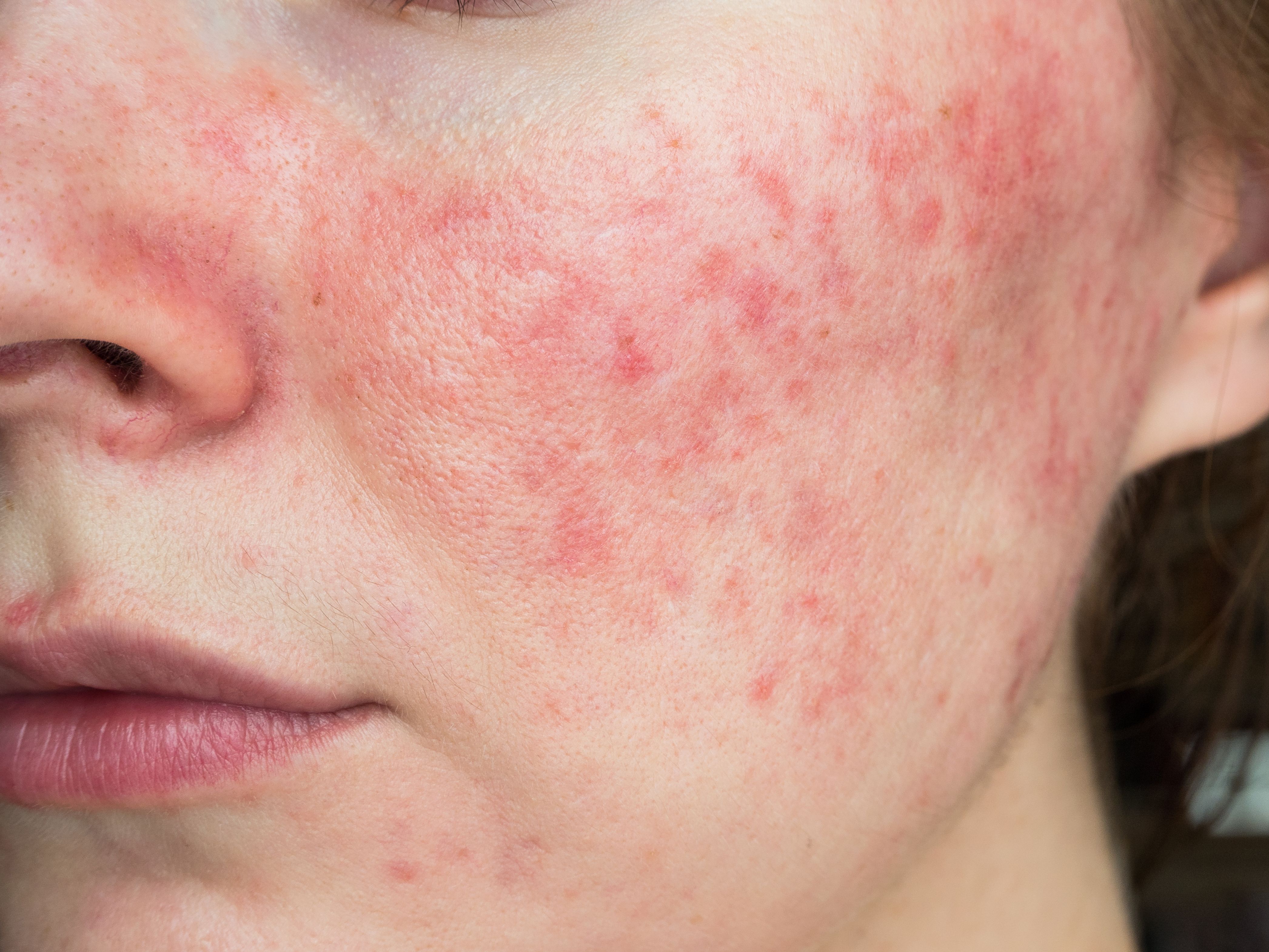- Acne
- Actinic Keratosis
- Aesthetics
- Alopecia
- Atopic Dermatitis
- Buy-and-Bill
- COVID-19
- Case-Based Roundtable
- Chronic Hand Eczema
- Drug Watch
- Eczema
- General Dermatology
- Hidradenitis Suppurativa
- Melasma
- NP and PA
- Pediatric Dermatology
- Pigmentary Disorders
- Practice Management
- Precision Medicine and Biologics
- Prurigo Nodularis
- Psoriasis
- Psoriatic Arthritis
- Rare Disease
- Rosacea
- Skin Cancer
- Vitiligo
- Wound Care
Publication
Article
Dermatology Times
Off-label Sarecycline Combats Papulopustular Rosacea
Author(s):
Recent therapeutic advances in topical and systemic therapy offer new options for cases that have not responded to established treatment approaches.
Treating moderate to severe rosacea can be challenging, particularly amid growing concerns about antibiotic resistance associated with current treatment protocols. A recent pilot study showing that off-label use of the novel third-generation tetracycline antibiotic sarecycline (Seysara; Paratek Pharmaceuticals and Almirall) is safe and effective in improving rosacea symptoms and may offer a new option.1
“We have not had a new antibiotic for rosacea for quite some time,” said Zoe Diana Draelos, MD, coauthor of the study presented as a poster at Maui Derm 2021.2 “It’s really very exciting to expand our topical armamentarium.” She is a consulting professor of dermatology at Duke University School of Medicine in Durham, North Carolina, founder of Dermatology Consulting Services, PLLC, in High Point, North Carolina, and chief medical editor of Dermatology Times®.
Current standard therapies for treating rosacea include systemic agents include minocycline and doxycycline as well as various topical formulations such as a minocycline foam (Amzeeq; Foamix), which was FDA approved in 2019. While this novel formulation helped address the problem of solubilizing minocycline, “having a new agent from the tetracycline family in the form of sarecycline opens up a lot of treatment options for our patients with moderate to severe rosacea,” Draelos said.
The FDA approved oral sarecycline for the treatment of moderate to severe acne vulgaris in 2018. The narrow-spectrum, tetracycline-derived oral antibiotic has anti-inflammatory properties and potent activity against gram-positive bacteria, including multiple strains of Cutibacterium acnes (C acnes), while exhibiting minimal activity against enteric aerobic gram-positive bacteria.
“Treatments that work in acne oftentimes work in rosacea,” Draelos said. “Antibiotics are used widely in rosacea because they are anti-inflammatory, reduce redness, and are also anti-infective because they are able to destroy C acnes, which probably has a role in certain forms of rosacea.”
Draelos and her fellow researchers explored that possible connection in a prospective, multicenter, parallel group study analyzing a total of 97 patients (mean age, 52.4 years; females, 82%) with moderate to severe papulopustular rosacea. They randomly assigned Group A (n = 72) to receive sarecycline once daily (based on weight-based dosing as described in the approved product labeling for acne vulgaris), and Group B (n = 25) to be given a control multivitamin once each day.
Patients were followed up at baseline and at 4, 8, and 12 weeks after the final treatment. Study end points included achieving clear or almost clear skin based on the Investigator Global Assessment (IGA) Scale, reduction of inflammatory lesions, and tolerability.
Although both groups had reduced IGA scores, results demonstrated that the sarecycline group achieved greater IGA reduction compared with the multivitamin group. Sarecycline also was associated with a statistically superior decrease in the total inflammatory lesion count compared with controls at the final follow-up visit.
Absolute and percentage lesion count reductions were greater in the sarecycline group at all follow-up time points compared to controls. Further data showed that sarecycline was well tolerated and could achieve significant reductions in dryness (P = .01), peeling (P = .02), skin burning (P = .01), and pruritus (P < .001) at the final follow-up visit.
Based on these results, Draelos said clinicians who encounter adverse effects from doxycycline or minocycline in their patients with rosacea could consider prescribing sarecycline off label for more challenging cases.
Some patients who require combination therapy (ie, in cases of Demodex folliculorum overgrowth) could benefit from topical ivermectin as well as oral sarecycline used off label as an anti-inflammatory, Draelos added.
Rosacea is likely a nexus of multiple conditions that fall under the umbrella of rosacea, often requiring a customization of therapy. Sarecycline could fill this niche, Draelos said. It could be combined with topical treatments to optimize outcomes, particularly in cases in which drug sensitivities and resistances may play a role, she added.
Draelos said sarecycline has fewer side effects and a better tolerability and safety profile than most other antibiotics currently available. Based on her research, sarecycline is better tolerated than oral doxycycline regimens used in rosacea and oral minocycline, which can cause photosensitivity and pigmentation issues.
“If you have a patient who needs oral antibiotics and you are not seeing efficacy with those currently on the market, the off-label use of sarecycline may be an option,” Draelos said.
Disclosure:
Draelos received funding from Almirall to participate in the sarecycline rosacea research.
References:
1. Rosso, JQ, Draelos ZD, Effron C, Kircik LH. Oral sarecycline for treatment of papulopustular rosacea: results of a pilot study evaluation of effectiveness and safety. J Drugs Dermatol. 20(4):426-431. doi:10.36849/JDD.5923
2. Del Rosso JQ, Kircik LH, Effron C, Draelos ZD. Oral sarecycline for treatment of papulopustular rosacea: results of a pilot study evaluation of effectiveness and safety. Poster presented at: Maui Derm Live In-Person Dermatology CME Conference and Maui Derm Connect Virtual Dermatology CME Conference; January 25-29, 2021; Maui, Hawaii; virtual.

Newsletter
Like what you’re reading? Subscribe to Dermatology Times for weekly updates on therapies, innovations, and real-world practice tips.





























